Adelaide Historical Walking Trail - North Terrace
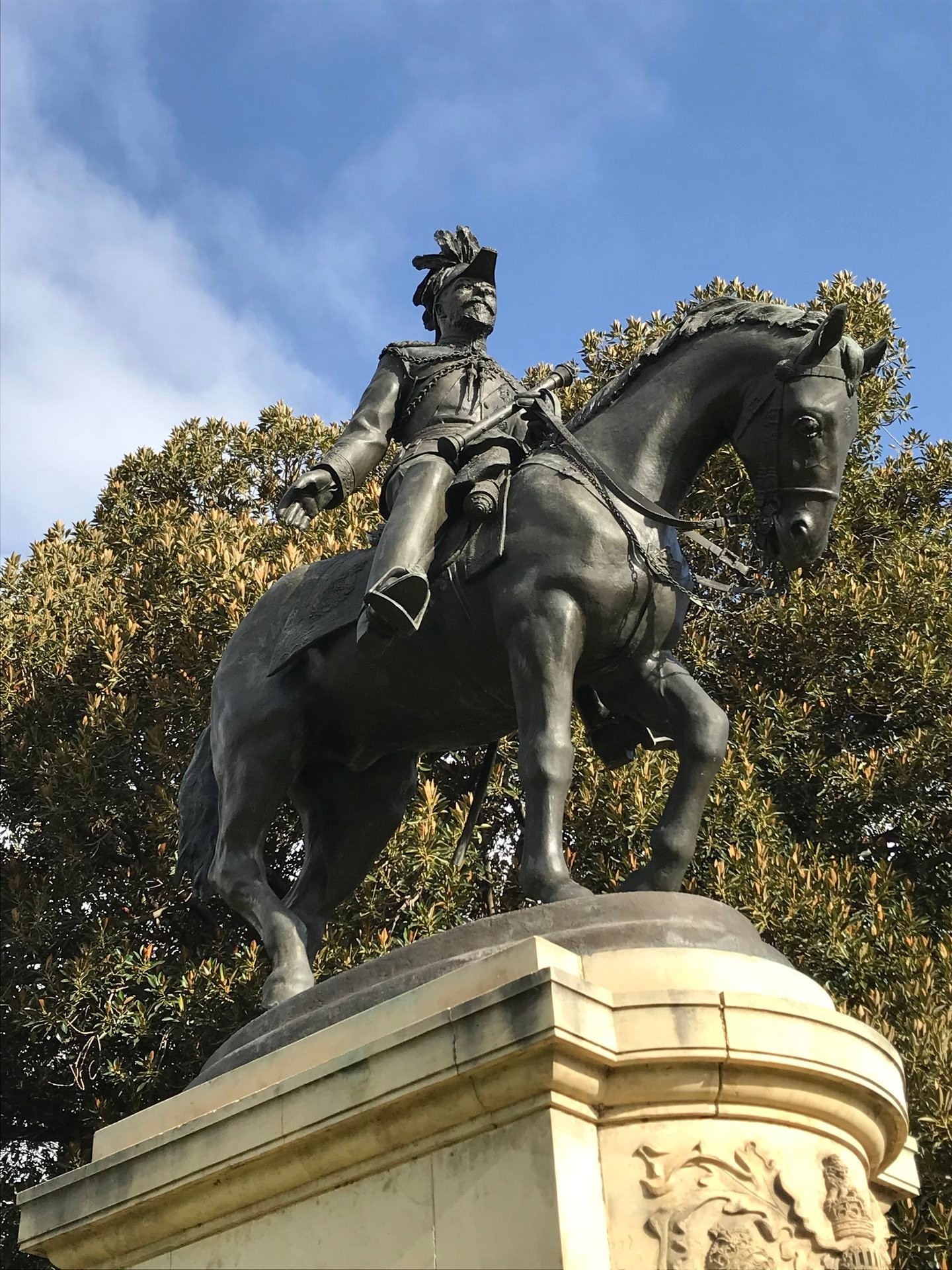
This walk reveals the history behind some of Adelaide valued statues and monuments that adorn our Park Lands.Begin the walk on North Terrace in the forecourt of the State Library, east of Kintore Avenue.
Allow 1.5 to 2 hours to do this walk

Cross of Sacrifice
The Cross of Sacrifice stands 11.6 metres (38 feet) high and is aligned to face the facade of St Peter's Cathedral. The Cross and accompanying Stone of Remembrance (found at the opposite end of the garden) are a commemorative shrine from the women of South Australia to their fallen servicemen lost in the fields of France during the great war (1914 – 18). The Cross was officially unveiled on Anzac Day 1922, in conjunction with the returned serviceman's parade which finished at the new memorial. As a tribute, a scroll with the names of Adelaide's lost is enclosed within the base of the cross. Even today Anzac Day parades end at this War Memorial.
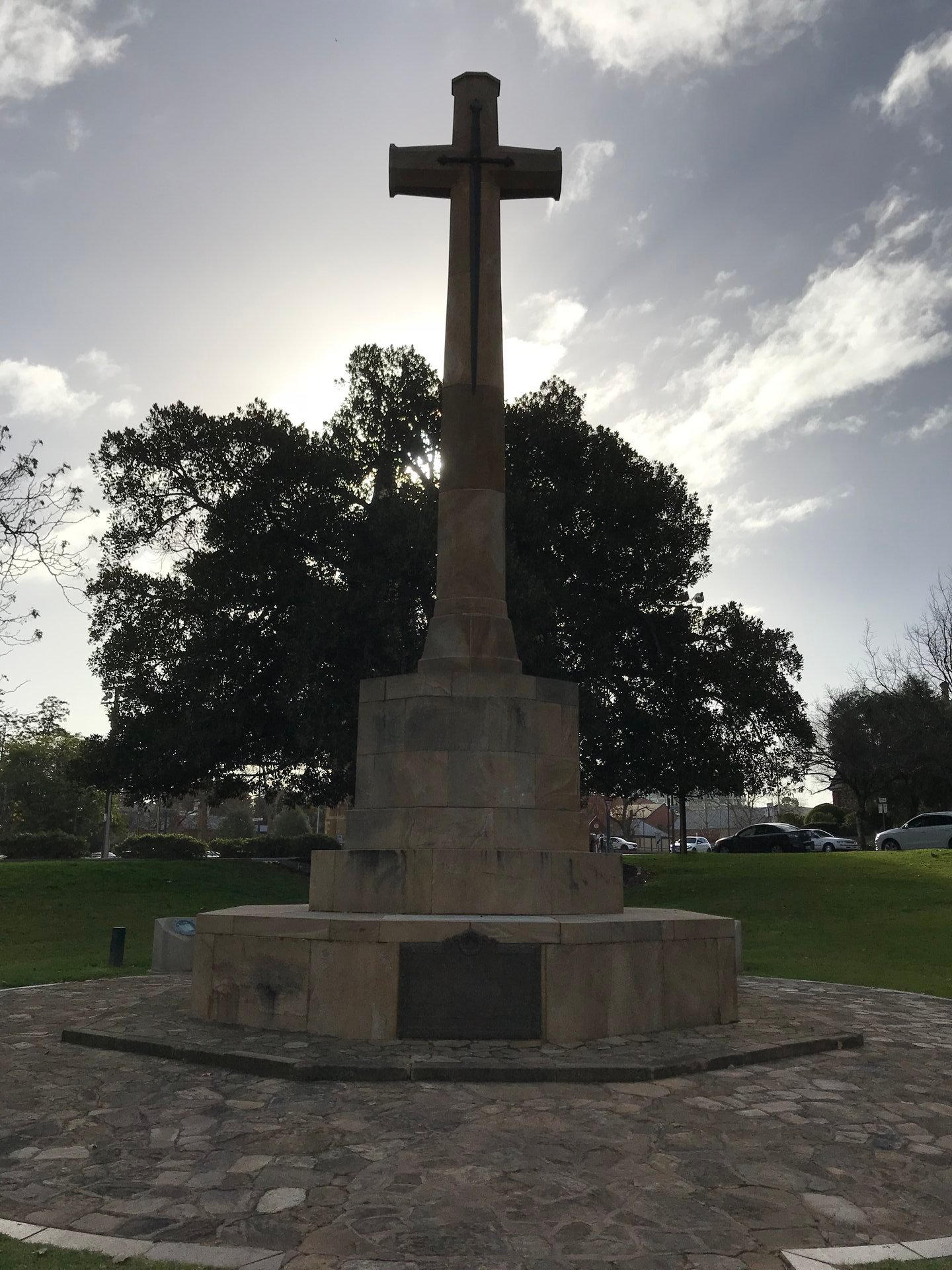
Cross of Sacrifice
North Adelaide SA 5006, AustraliaNational War Memorial
by Woods, Bagot, Jory & Laybourne Smith; and Rayner Hoff 1931. The State Government decided to build this memorial in 1919, but it was not completed and unveiled until Anzac Day, in 1931. The design of the memorial was the subject of many arguments, and it was eventually decided to seek expressions from the community through the running of a competition. The winning design that you see before you was dubbed the "spirit of sacrifice". The main figure, being the angel with the sword, represents the "spirit of duty", while the three bronze figures of a student, farmer and a girl, represent the community. The woman at the back of the memorial represents compassion and the aftermath of war, while the fountain reflects the constant flow of memories for those that sacrificed their lives. Why not take the time to venture in and have a look inside the memorial?
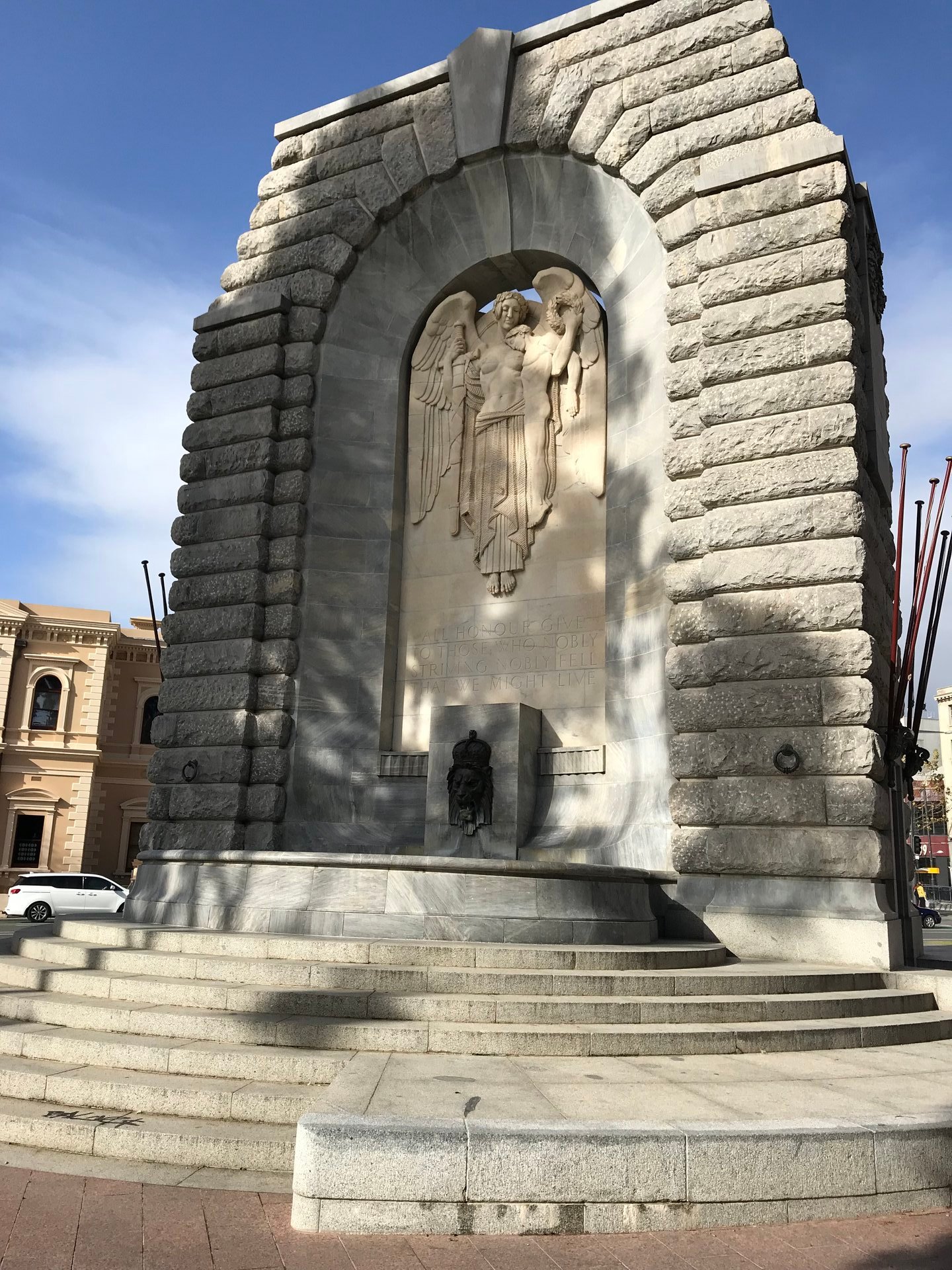
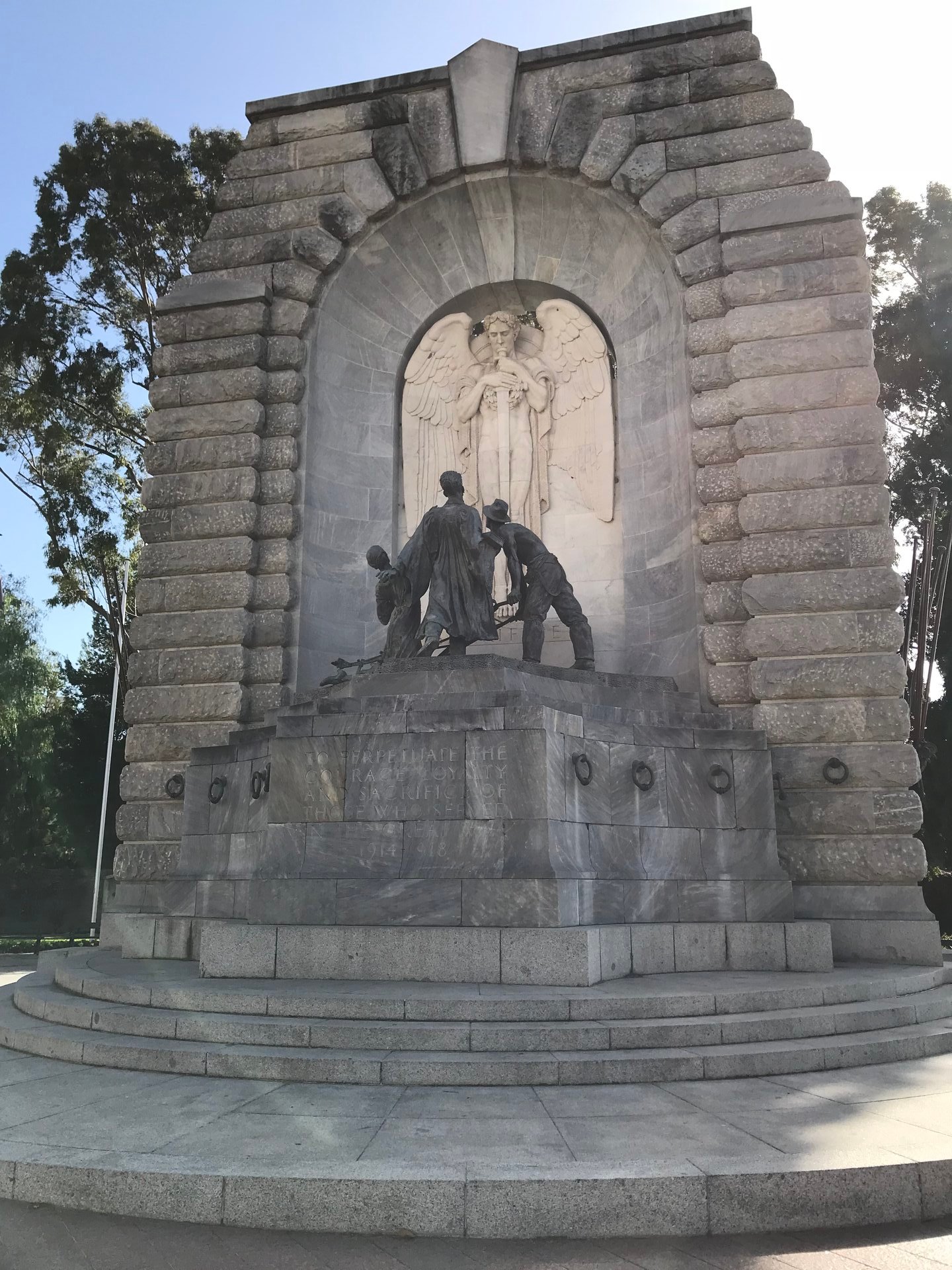
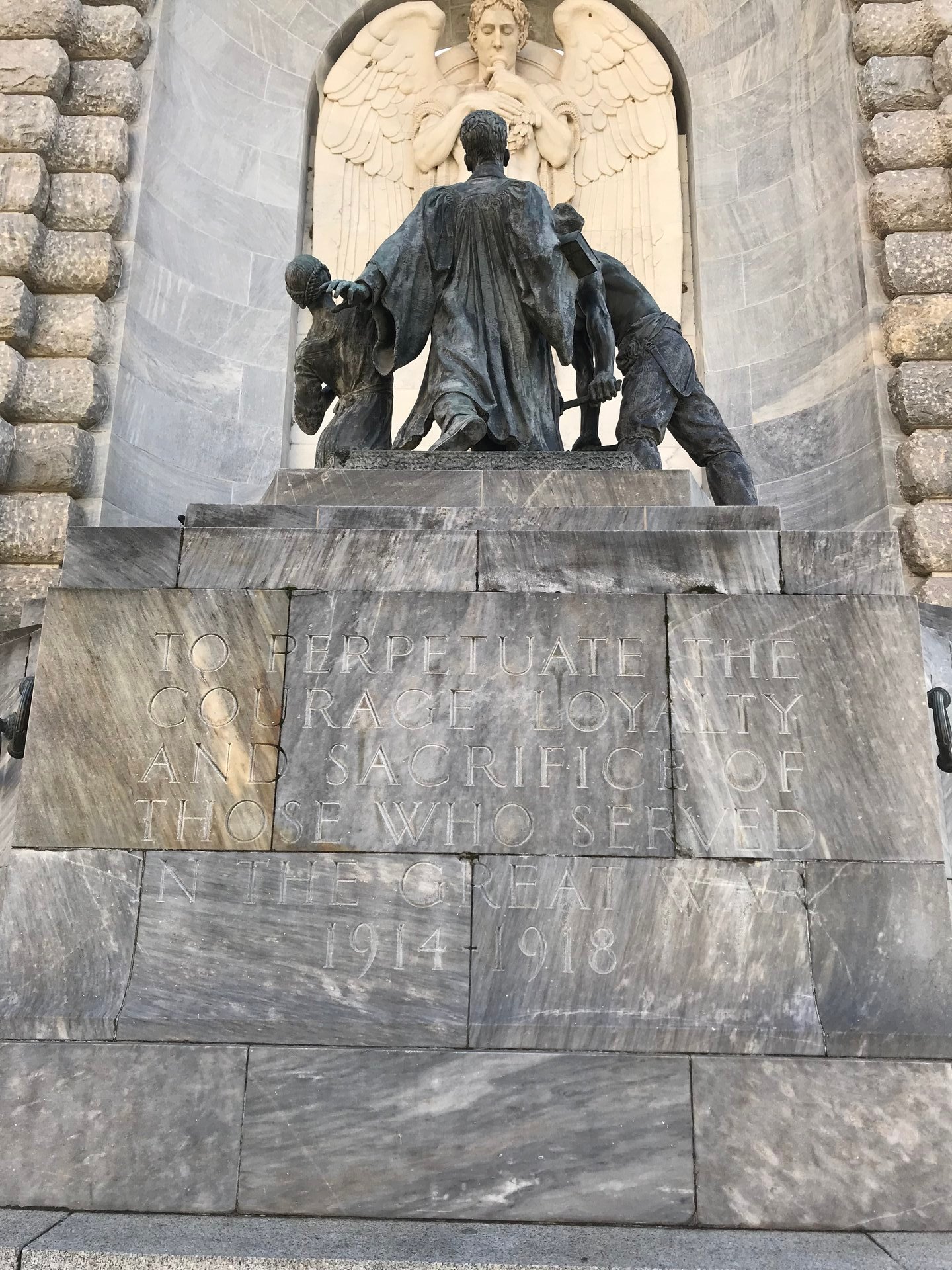
National War Memorial
190 North Terrace, Adelaide SA 5000, AustraliaAdelaide Festival Centre
The Adelaide Festival Centre, is one of the nation's finest and most versatile performing arts and entertainment venues. The site it is built on was once home to Adelaide City Baths, which contained separate swimming, hot and Turkish baths for men and women. The Centre was designed by the architectural firm Hassell and Partners, to equally suit the needs of orchestral concerts, large-scale operas, ballets, dramas and uses. It was completed in 1977, at a cost of $25 million. The centre facilities include the Festival Theatre, the Playhouse, the Space, the Amphitheatre and the Plaza. The Festival Theatre seats 1,978 people and has one of the largest stages in Australia with a performing area of 532 square metres. The Playhouse seats up to 612 and the Space up to 400.
Adelaide Festival Centre
King William St, Adelaide SA 5000, AustraliaMatthew Flinders Memorial
by F Brook Hitch 1934 Matthew Flinders was a Surveyor and Hydrographer who, in company with George Bass, made explorations of the eastern coast of New South Wales from 1797 to 1798, and circumnavigated Tasmania in 1798 and 1799. In 1801, he commanded the "Investigator" on a survey and scientific investigation of the Australian Coast. Flinders was a navigator of outstanding ability and his work helped dispel the myth that Australia was divided into two large islands. He was also responsible for naming Spencer's Gulf.
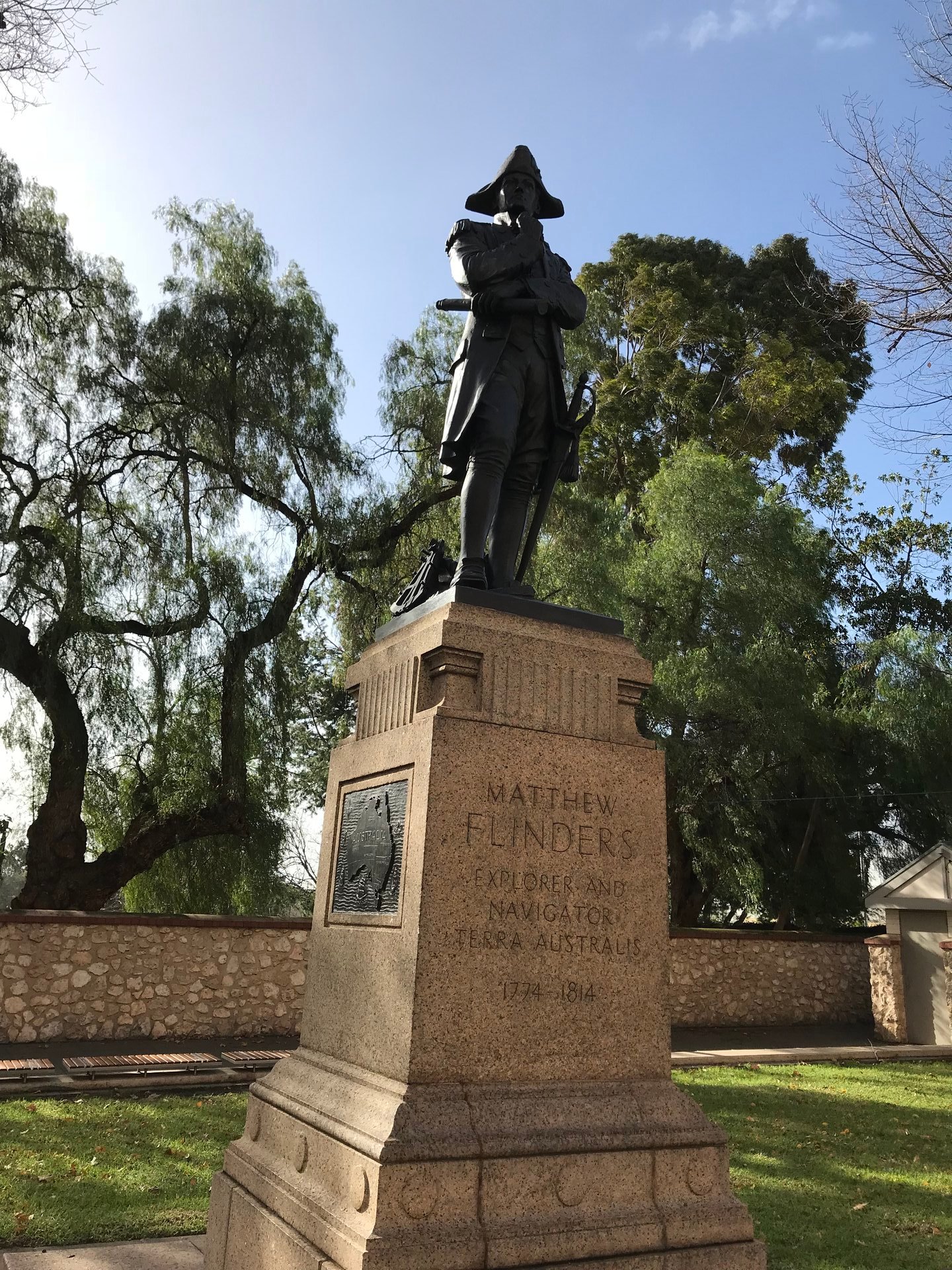
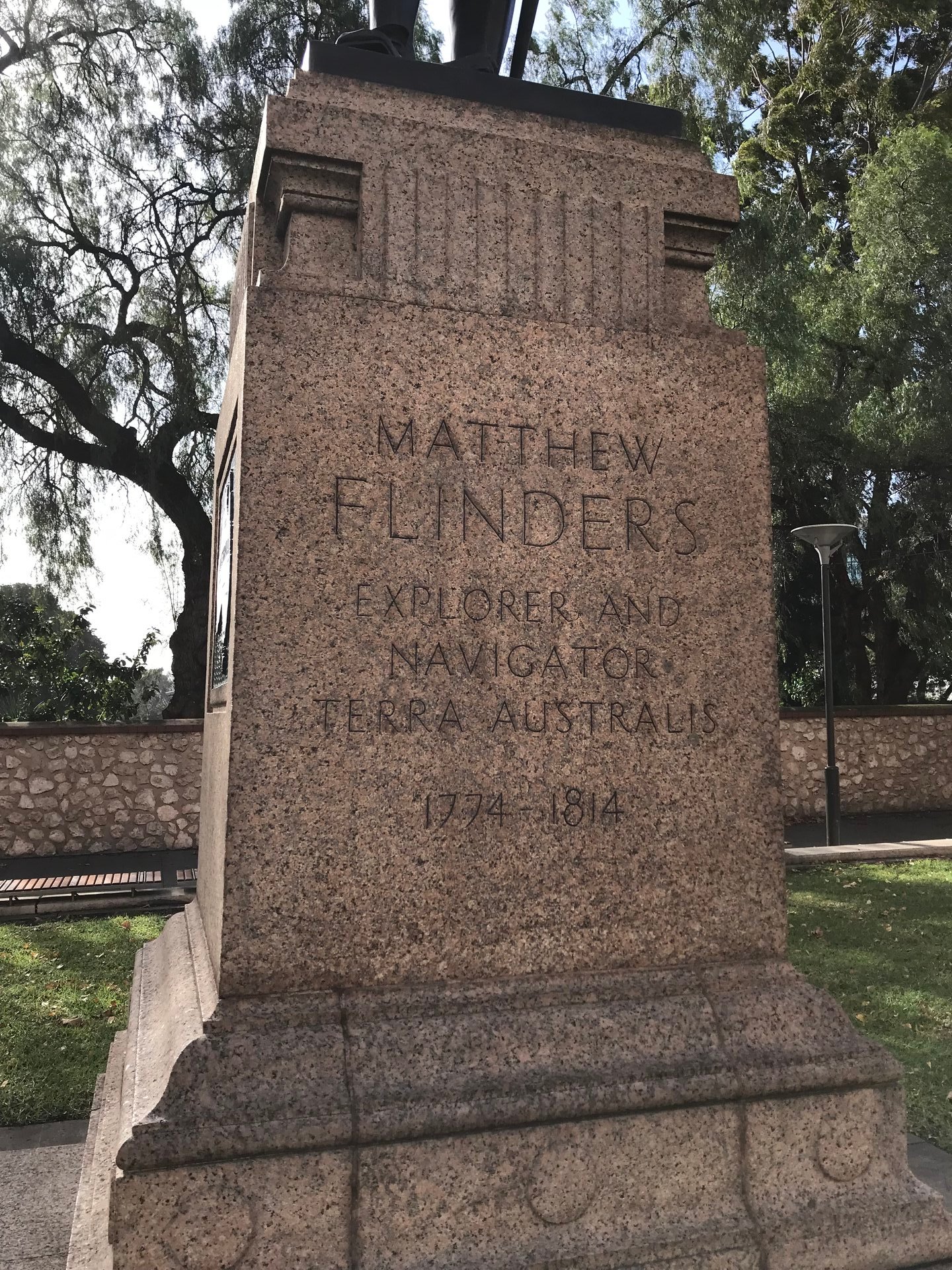
Matthew Flinders Memorial
Adelaide SA 5000, AustraliaSouth Australian Naval Memorial Garden
Phineas Philip Davies was the first serving South Australian seaman to die in the colonial navy. He died at the Glenelg Commemoration Day on December 28, 1885 as a result of a premature discharge of the HMC’s “Protector’s” eight inch gun. The garden placed in front of his memorial consists of over 30 plaques commemorating various shipwrecks that occurred in South Australia.Before carefully crossing the road, take notice of some of the plaques and monuments that form part of 'Peace Park'.
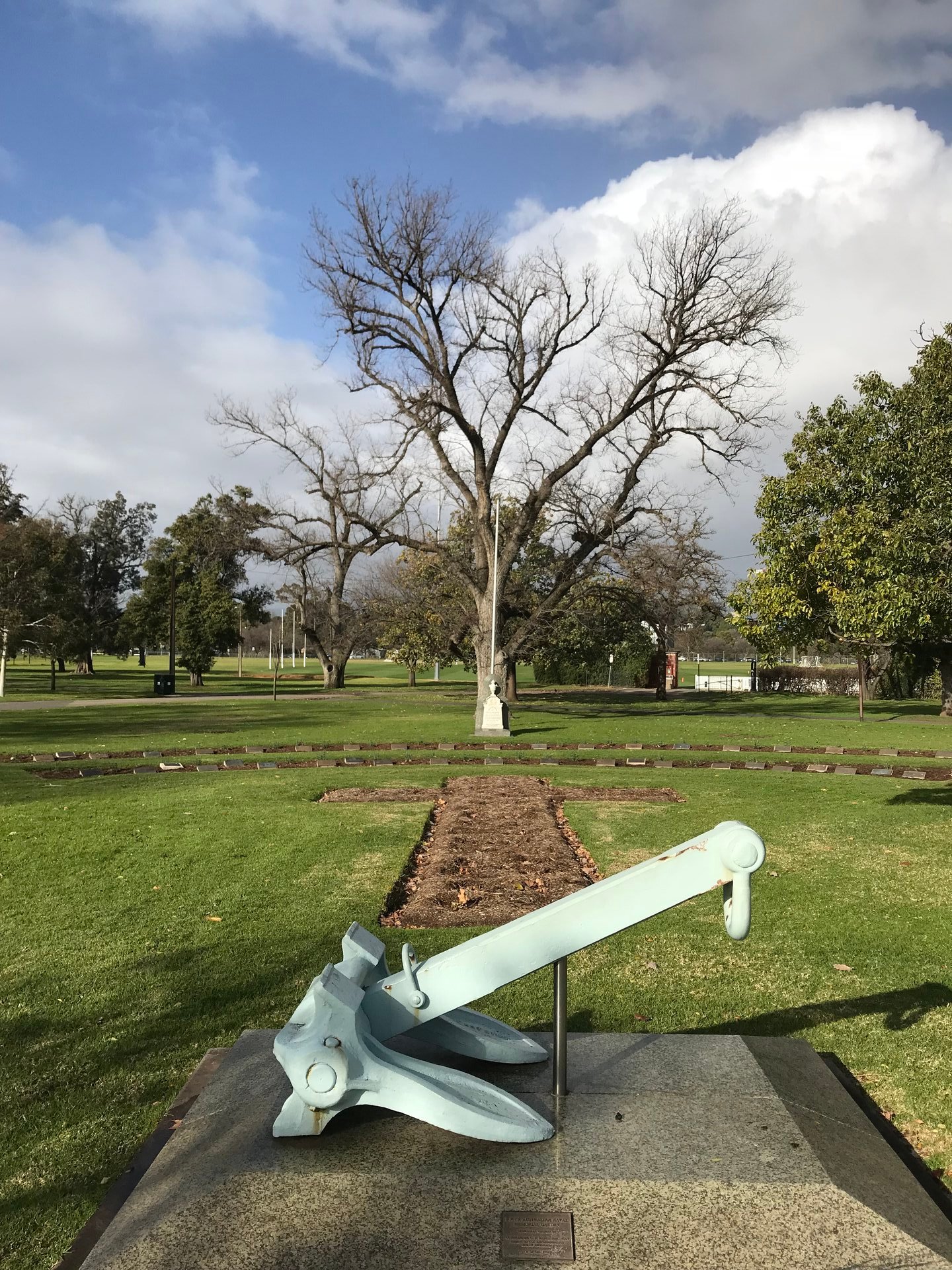
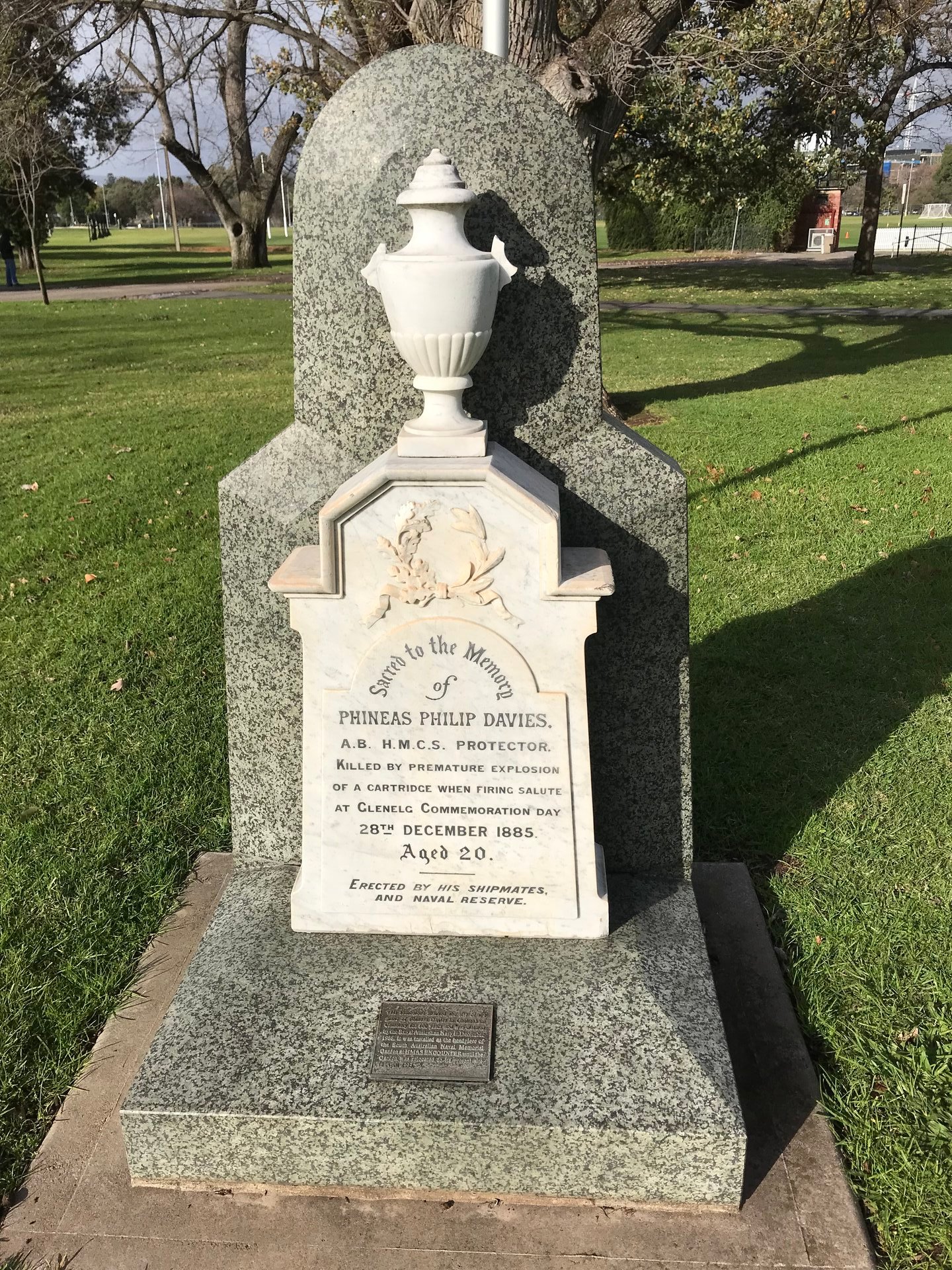
South Australian Naval Memorial Garden
North Adelaide SA 5006, AustraliaState Library of South Australia
by WJ Maxwell 1894 Robert Burns was a renowned Scottish Poet, who lived from1759 to 1796. He wrote most of his poetry in Lowland Scots, which was his native tongue. It is somewhat surprising to learn that he is one of Russia's favourite poets. In fact, the former USSR was the first country to issue a stamp commemorating him. This statue bears the honour of being the first statue carved in Adelaide.
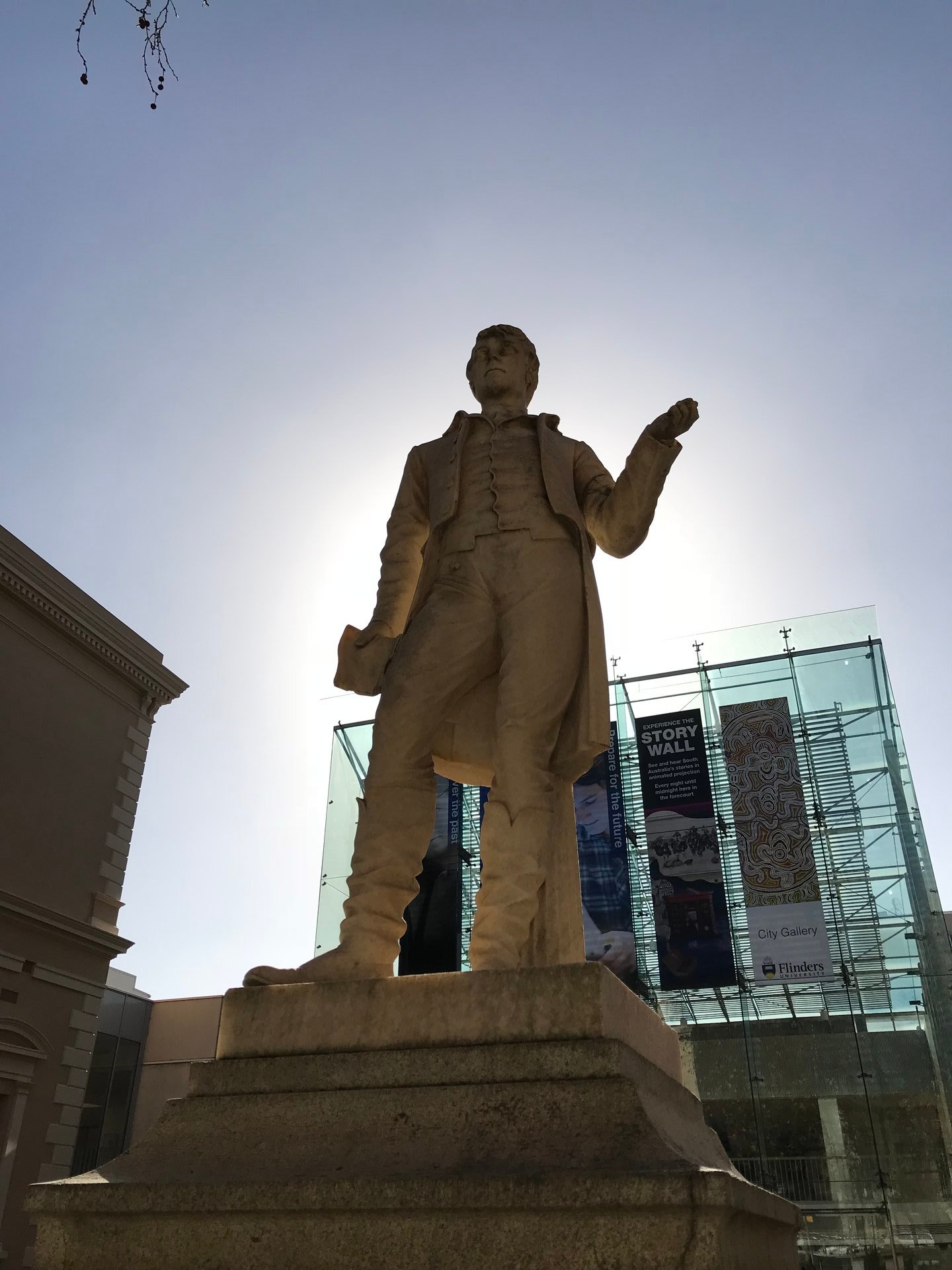
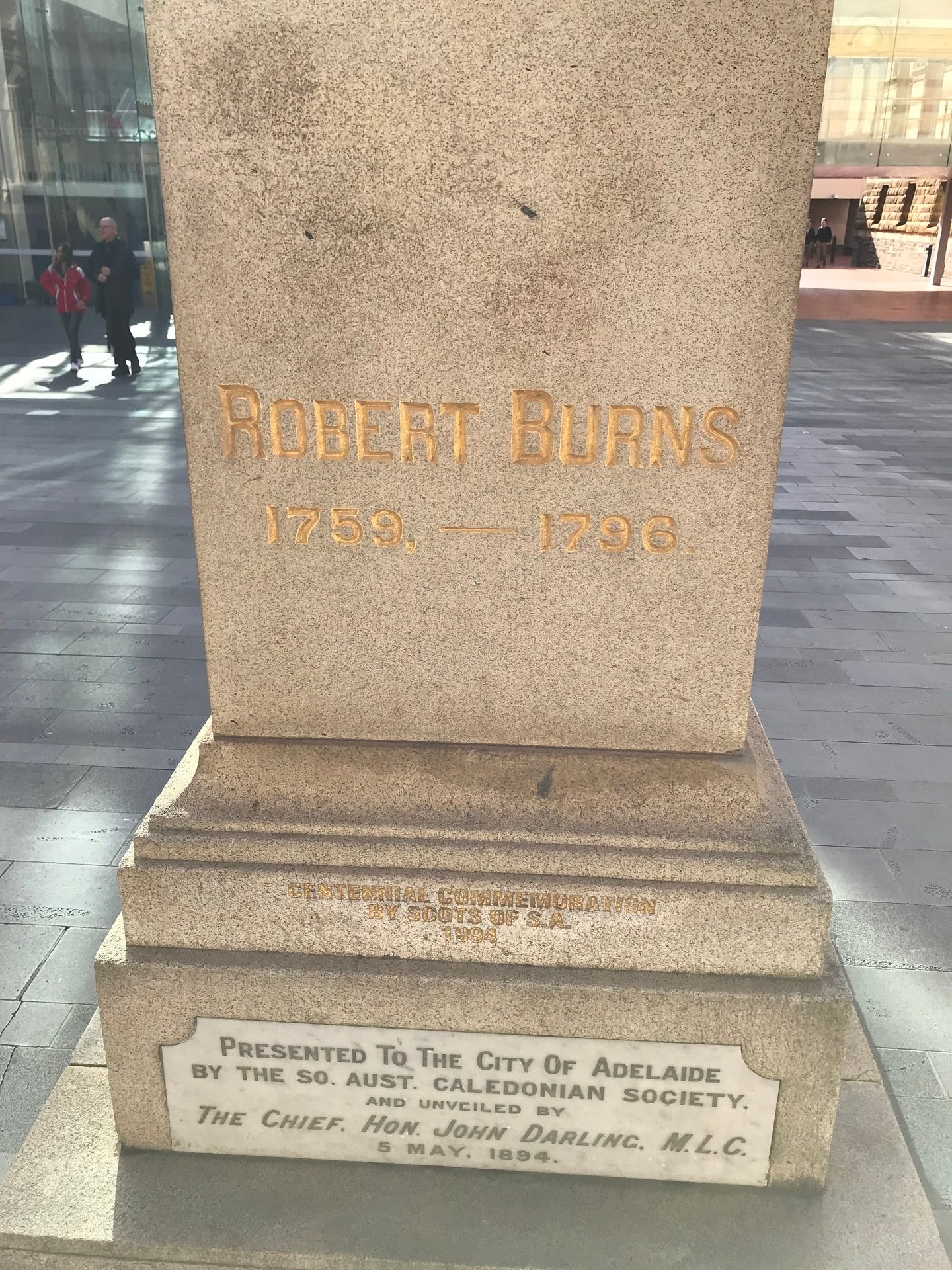
State Library of South Australia
North Terrace, Adelaide SA 5000, AustraliaKing George V
by M Lambert 1950 Born in 1865, King George V was the second son of KingEdward VII and grandson of Queen Victoria. From the early age of 12, he was trained for a career in the Royal Navy. His older brother died and he gained heir to the throne, eventually reigning from 1910 to 1936. During World War I, he cut off all royal family connections with Germany, and he was responsible for changing the name of the royal house from Saxe-Coburg-Gotha to Windsor. This statue was unveiled on Anzac Day, 25th April 1950.
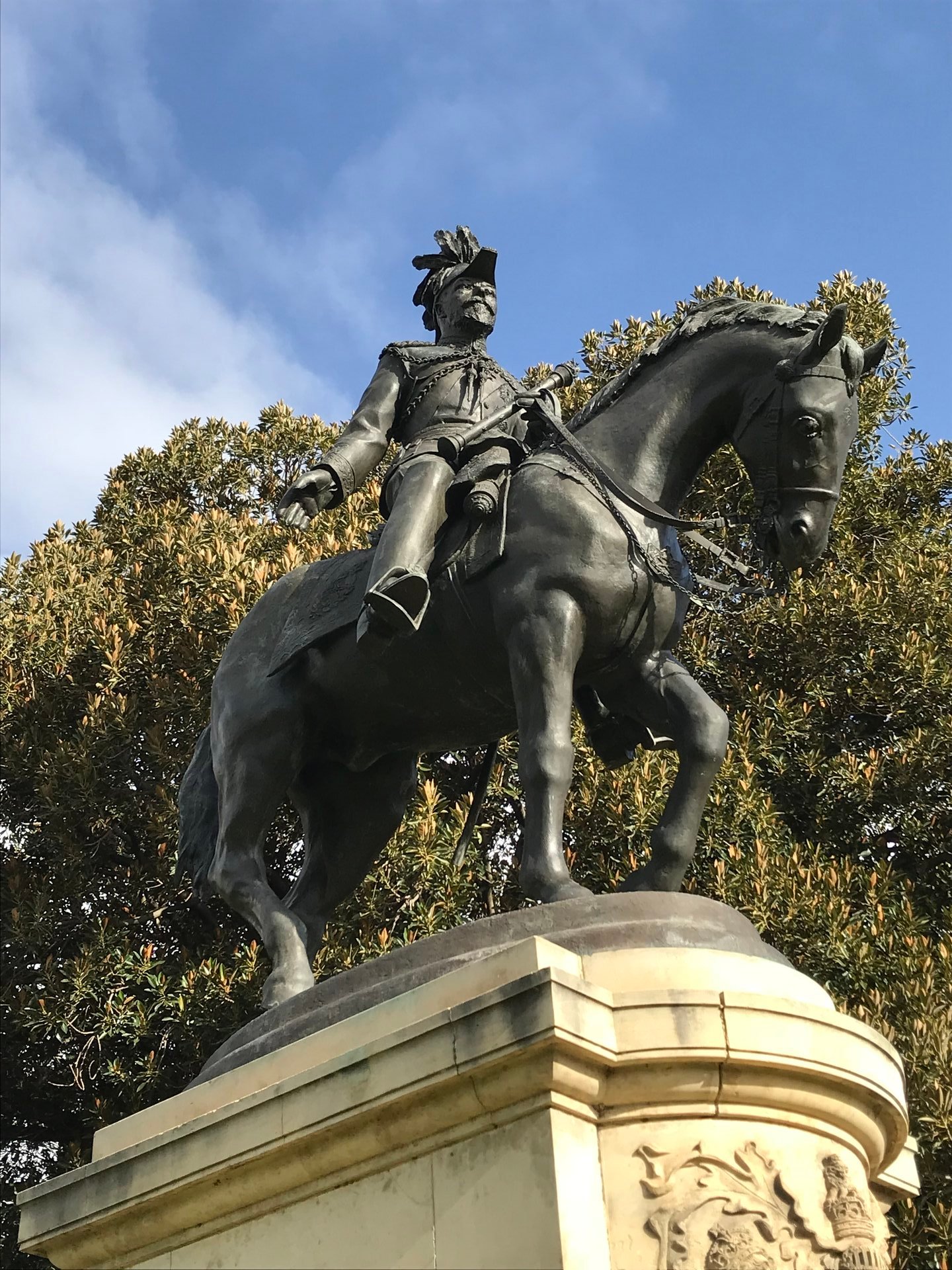

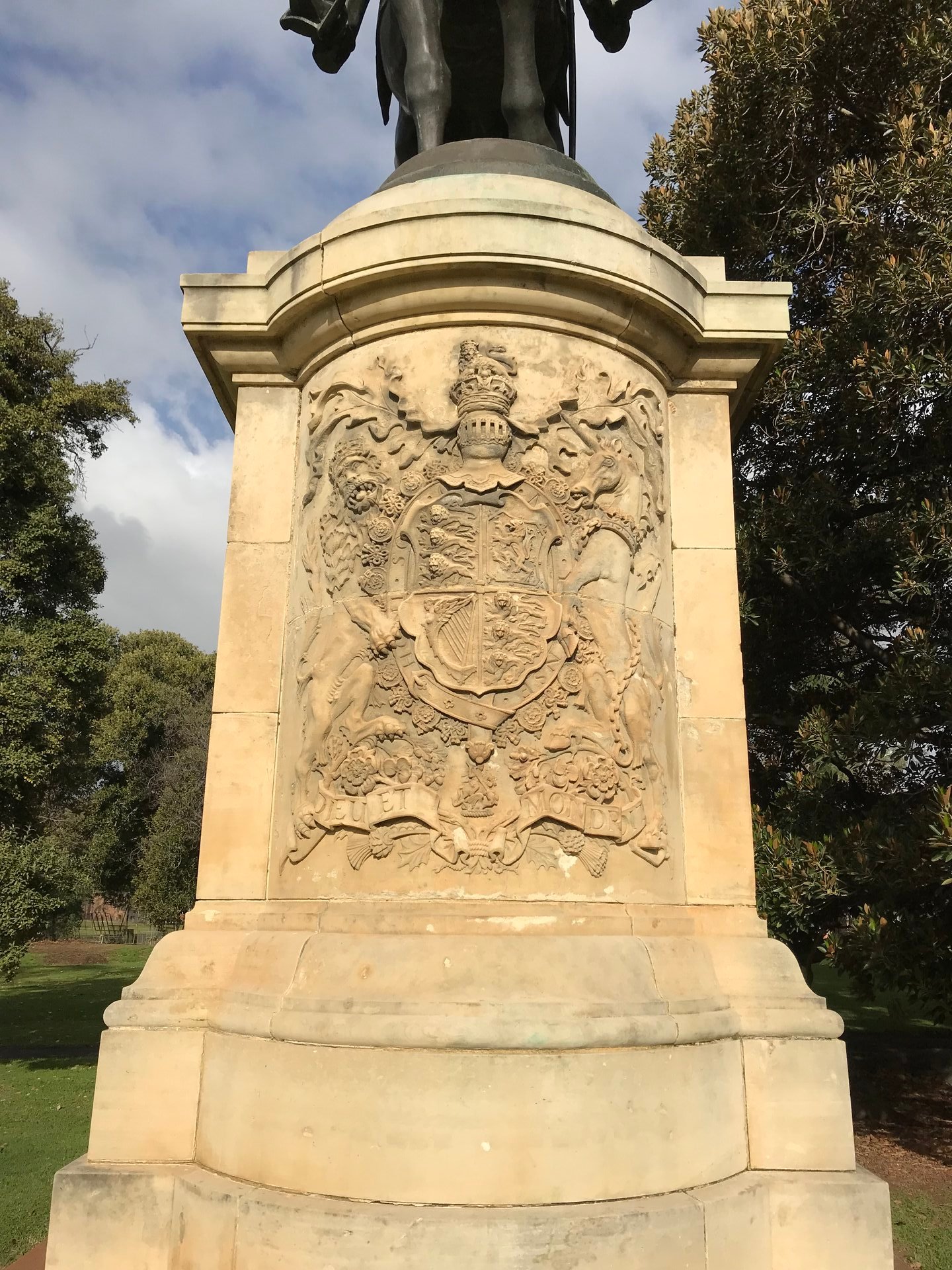
King George V
North Adelaide SA 5006, AustraliaAngas Gardens
by WR Cotton 1915 This intricate memorial was made in honour of John Howard Angas and George Fife Angas. They were responsible for establishing the Angas family dynasty, having both pastoral and political success in South Australia. Not everyone shared the admiration for the Angas family name, for it was originally intended to place this memorial in Victoria Square, but an outcry by certain people led to the memorial being eventually placed here.
Angas Gardens
North Adelaide SA 5006, AustraliaLight's Vision
Sculpted by W. Birnie Rind R.S.A. Architects: Garlick, Sibley & Wooldridge. Colonel William Light, was the first Surveyor-General of SouthAustralia and founder of Adelaide. He was born at Kuala Kedah (Malaysia) on 27 April, 1786. He served at various times in both the Navy and the Army and was captured by Napoleon’s forces in Verdun, France in 1803 when war broke out, but escaped after only one month. He arrived in South Australia in 1836, deciding upon the site for Adelaide on the last day of that year.His survey of Adelaide began on 11 January, 1837 at the junction of what is now North and West Terraces, with the work being completed on 10 March. Colonel Light died from tuberculosis onOctober 6, 1839 and was buried in Light Square, where a marble column now stands over his grave. The statue you see before you was originally unveiled in Victoria Square (1906) and was moved to Montefiore Hill, North Adelaide, in 1938. This area is known as Light's Vision.
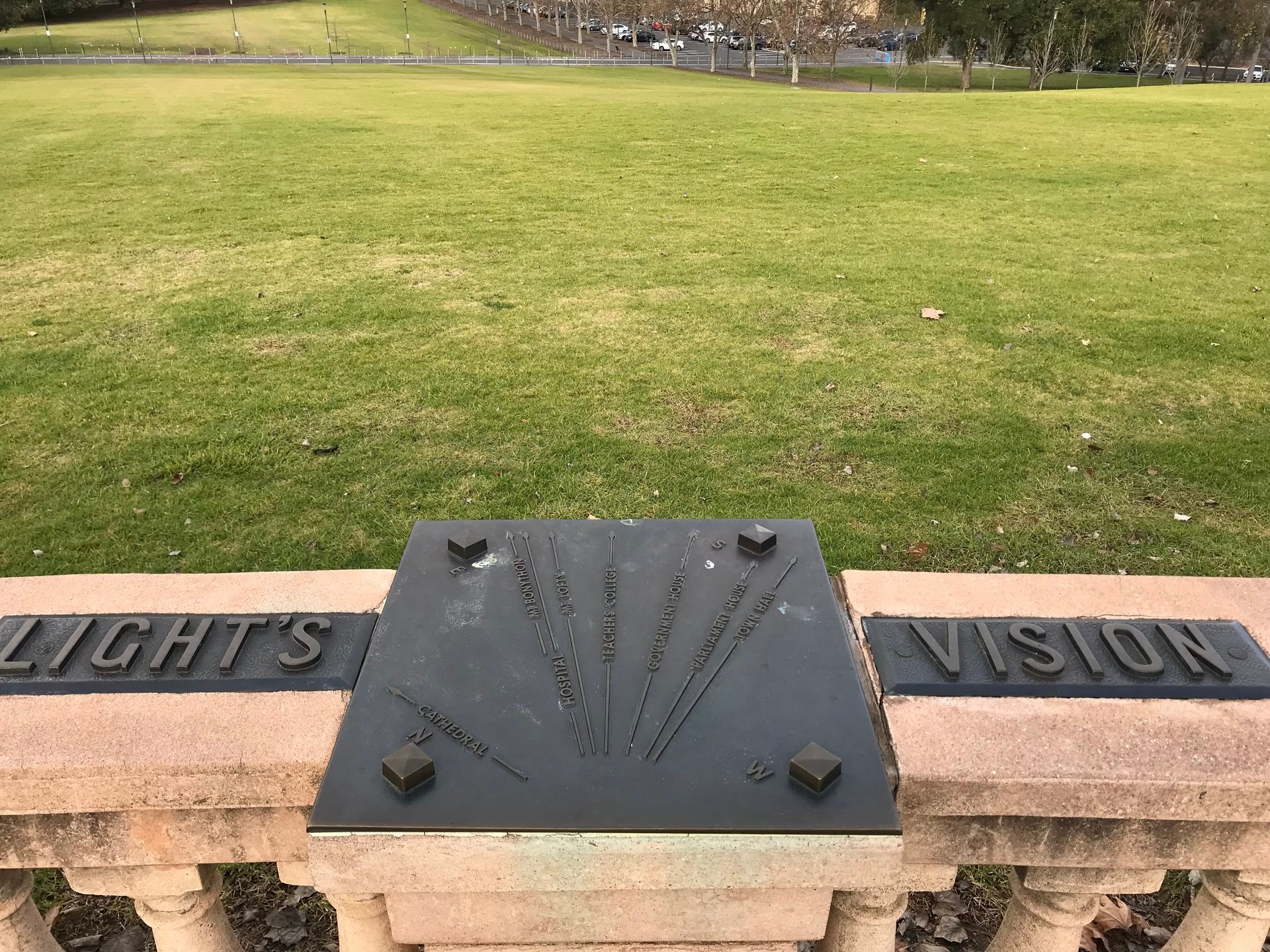
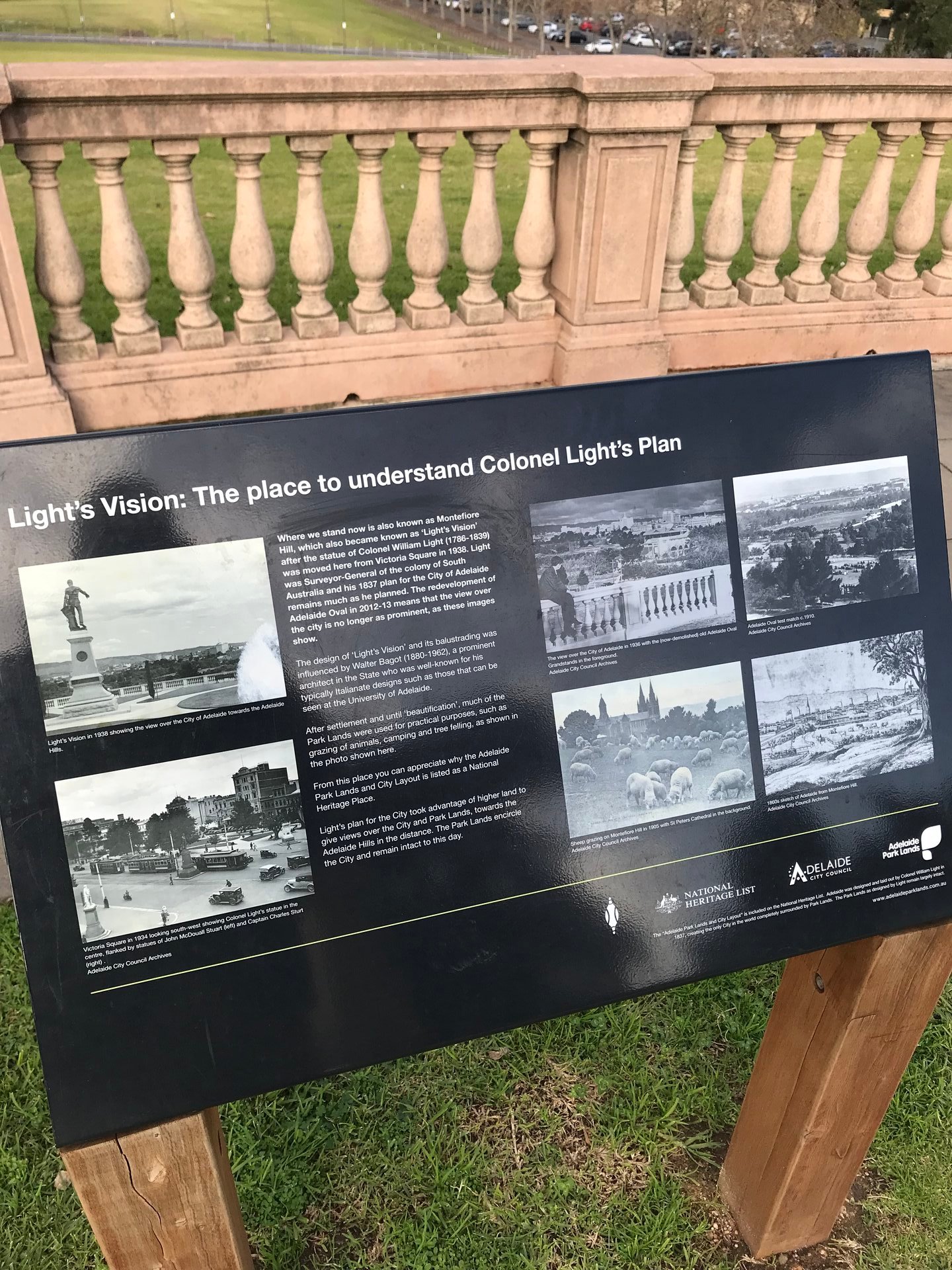
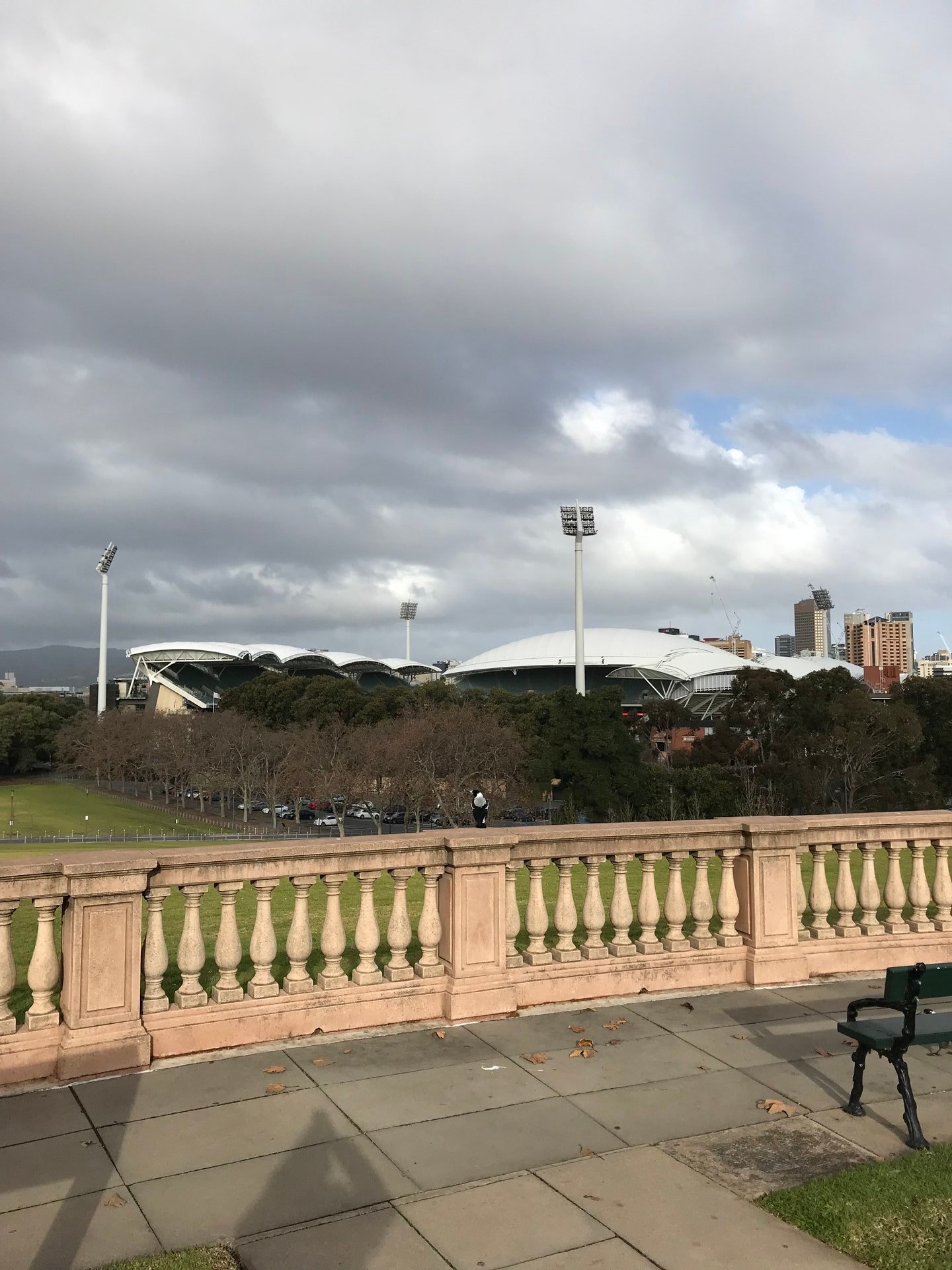
Light's Vision
2/76 Pennington Terrace, North Adelaide SA 5006, AustraliaSir Donald Bradman Statue
Sir Donald Bradman was born in 1908 and is recognised as the greatest batsman in the history of cricket. He took the cricketing world by storm, with his achievements on the cricket field between 1928 to 1948. In 1936 he was made Australian Captain and his career Test average of 99.94 is the highest ever and almost double that of any other batsman. Knighted on 15th March 1949, he is the only Australian ever to receive this honour for services to the game of cricket.
Sir Donald Bradman Statue
The Great Unnamed / Lone Gum, North Adelaide SA 5006, AustraliaEsther Lipman Gardens
This rose garden was made possible by a request from Robin M.Laffer to the City of Adelaide in 1968. The garden consists of 13 circular beds around a paved circular patio, pond and 63 trees.The garden was opened on October 12, 1977. This park is also home to a sundial erected in memory of Mr H.J. Lipman (1889 –1960). Mr Lipman was the husband of Councillor Lipman, the City's first Woman Councillor of the City of Adelaide.
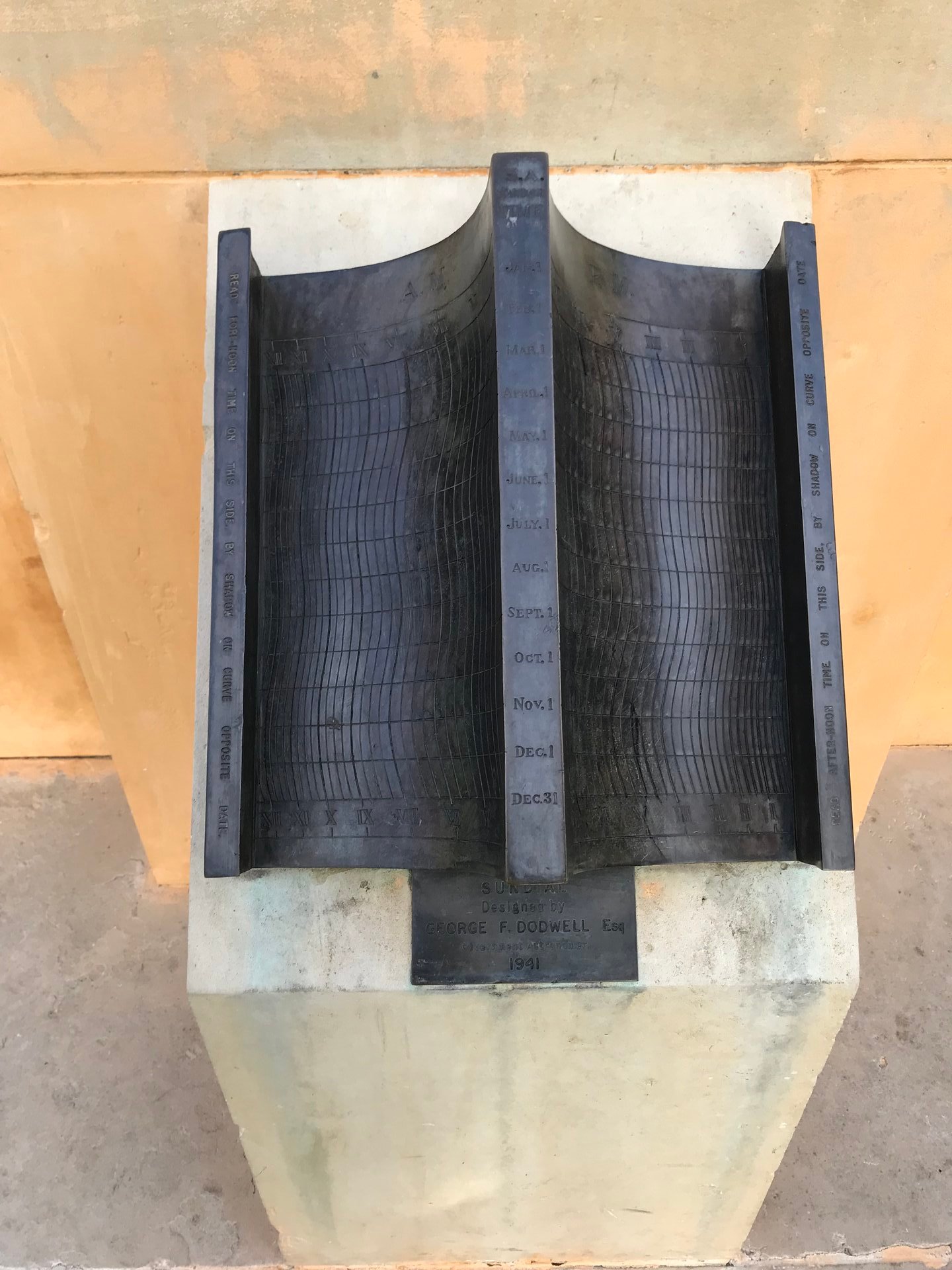
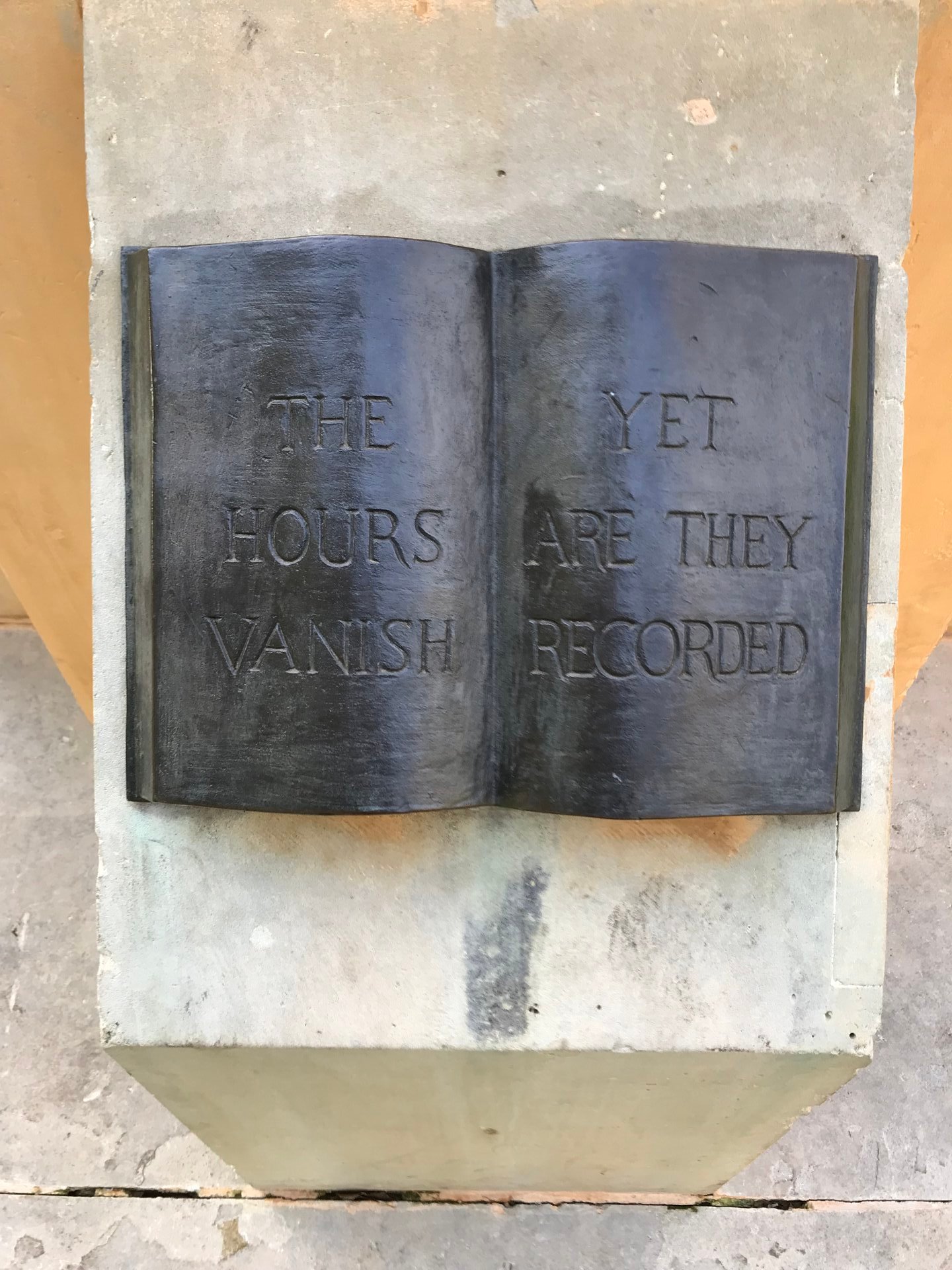
Esther Lipman Gardens
Adelaide SA 5000, AustraliaState Library of South Australia
by Sir B Mackennel 1920 King Edward VII was born in 1841, and reigned from 1901 to1910. He was 59 years old when he became King, having been heir for longer than anyone else in British history. His main interests lay in foreign affairs and military and naval matters.He was responsible for the "Triple Entente", an alliance betweenGreat Britain, France and Russia, which was formed during the first decade of last century, and which some believe, led to the outbreak of the first World War.
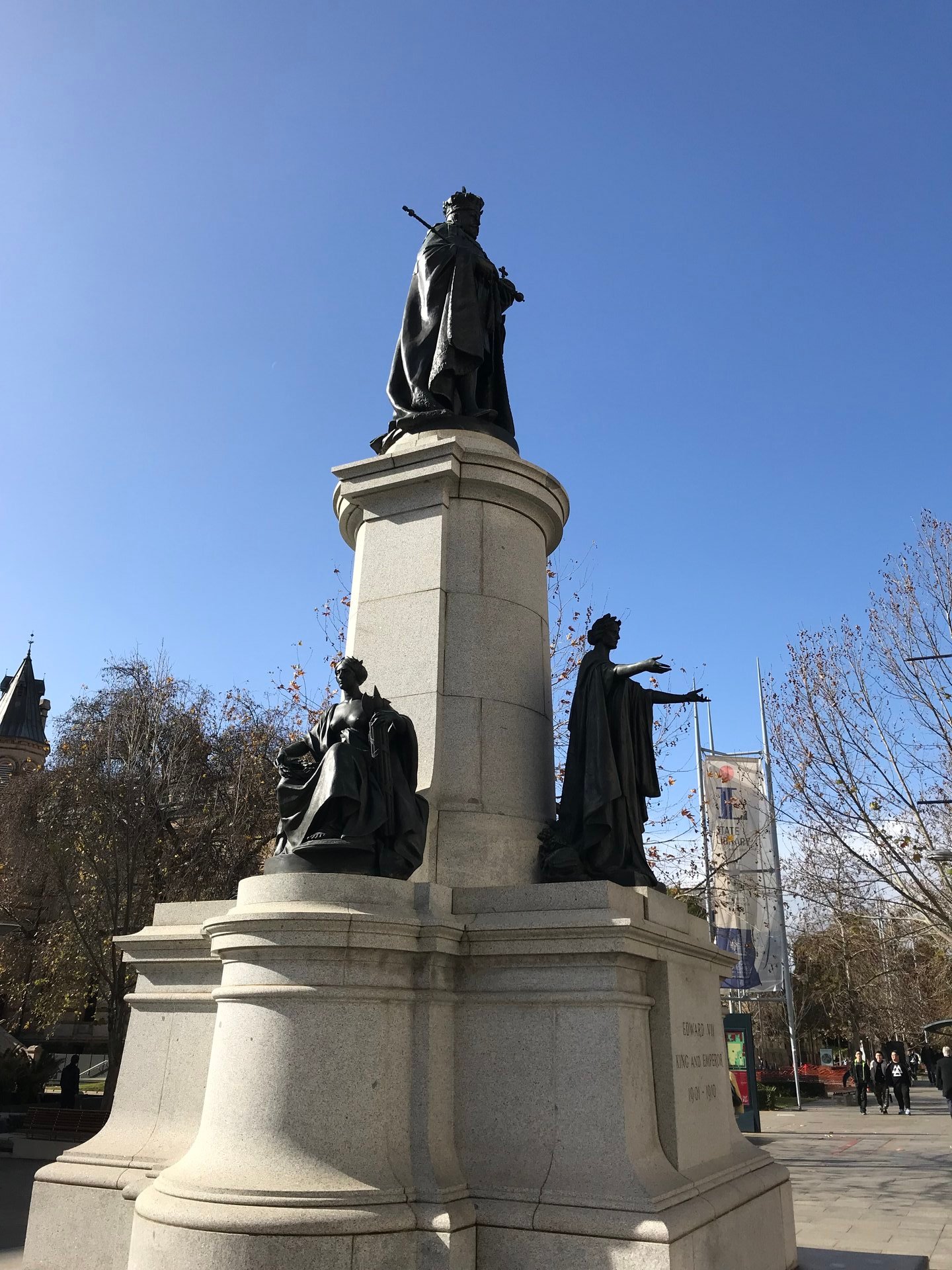
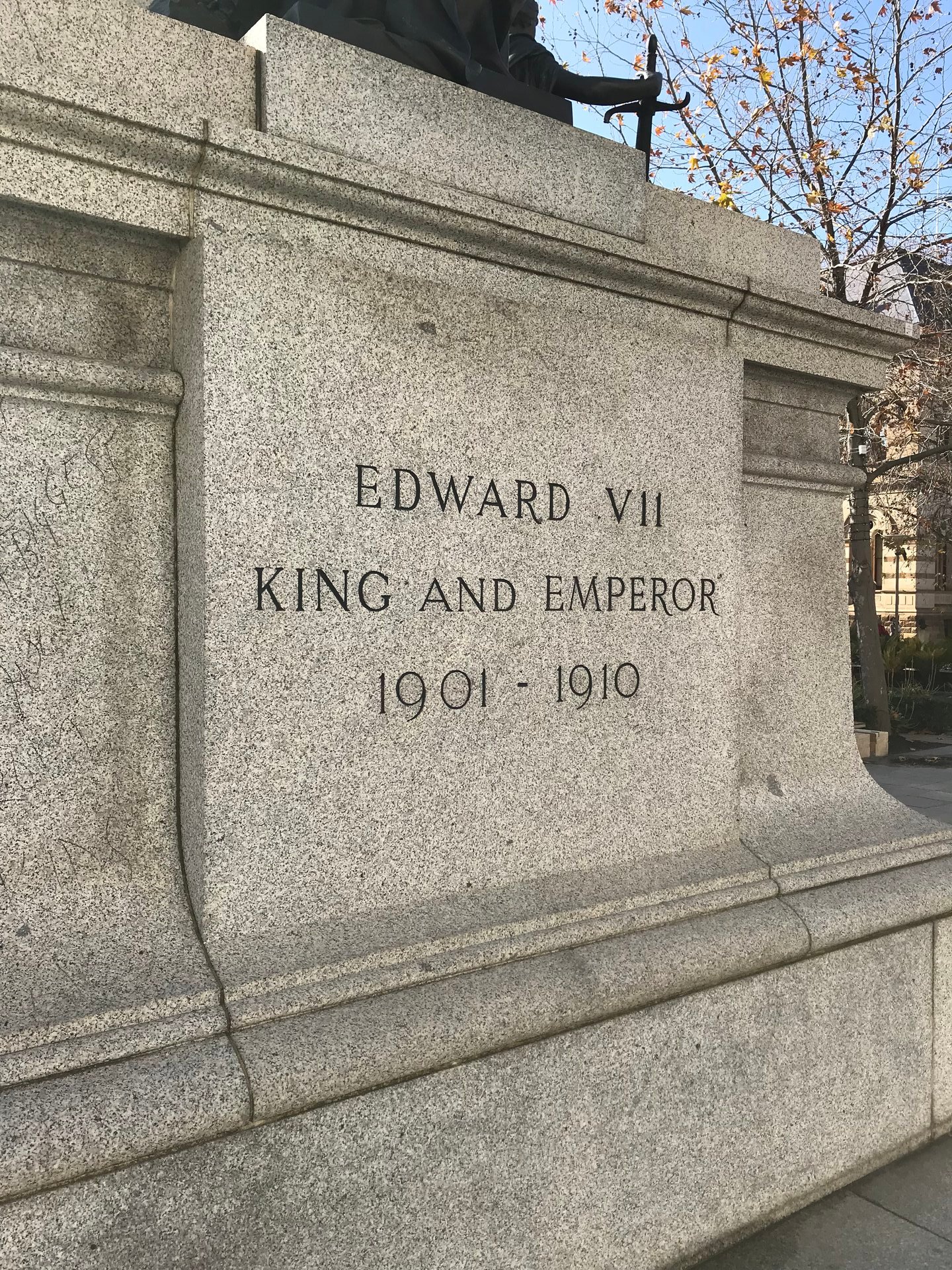
State Library of South Australia
North Terrace, Adelaide SA 5000, AustraliaPioneer Women's Memorial Garden
by Ola Cohn 1941 This garden of remembrance was established for the Centenary Year of 1936 by the women of South Australia as a tribute to the pioneer women of the state. Ola Cohn, a Melbourne Sculptor, was commissioned to design and create the statue for the memorial. She experienced difficult times during the design stage, with her first three designs being rejected. The design that was finally accepted and is what you see before you represents' the spirit of womanhood capable of giving birth to a nation'.The 'unladylike' hands represent the power and strength of the pioneer woman. Can you work out the time from the sundial on the side of the statue? Continue in a northerly direction alongside King William Street. Have a look at the beautifully landscaped Esther Lipman Garden. Lady Esther Lipman was the first woman Councillor elected by the City of Adelaide in1954.
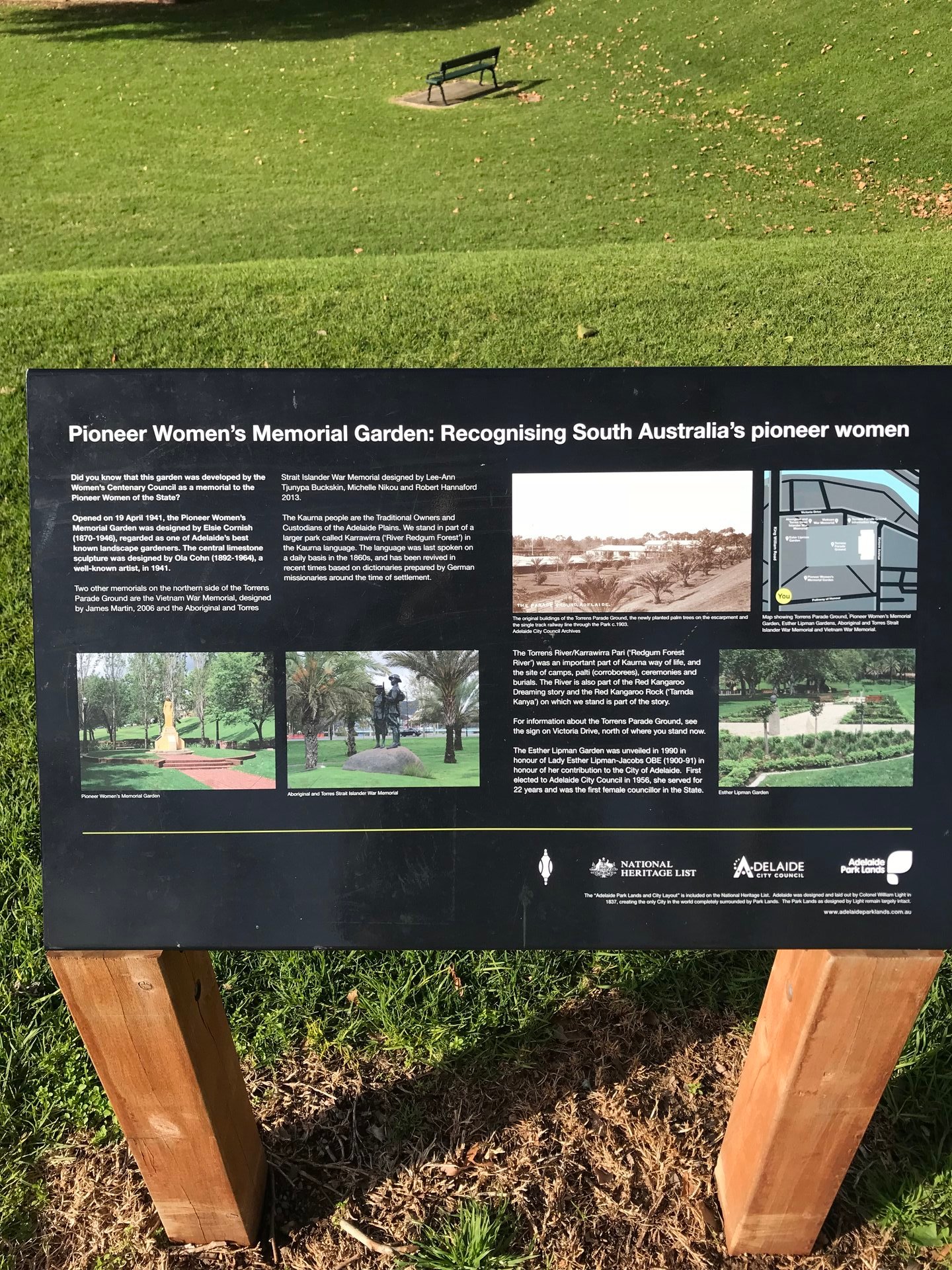
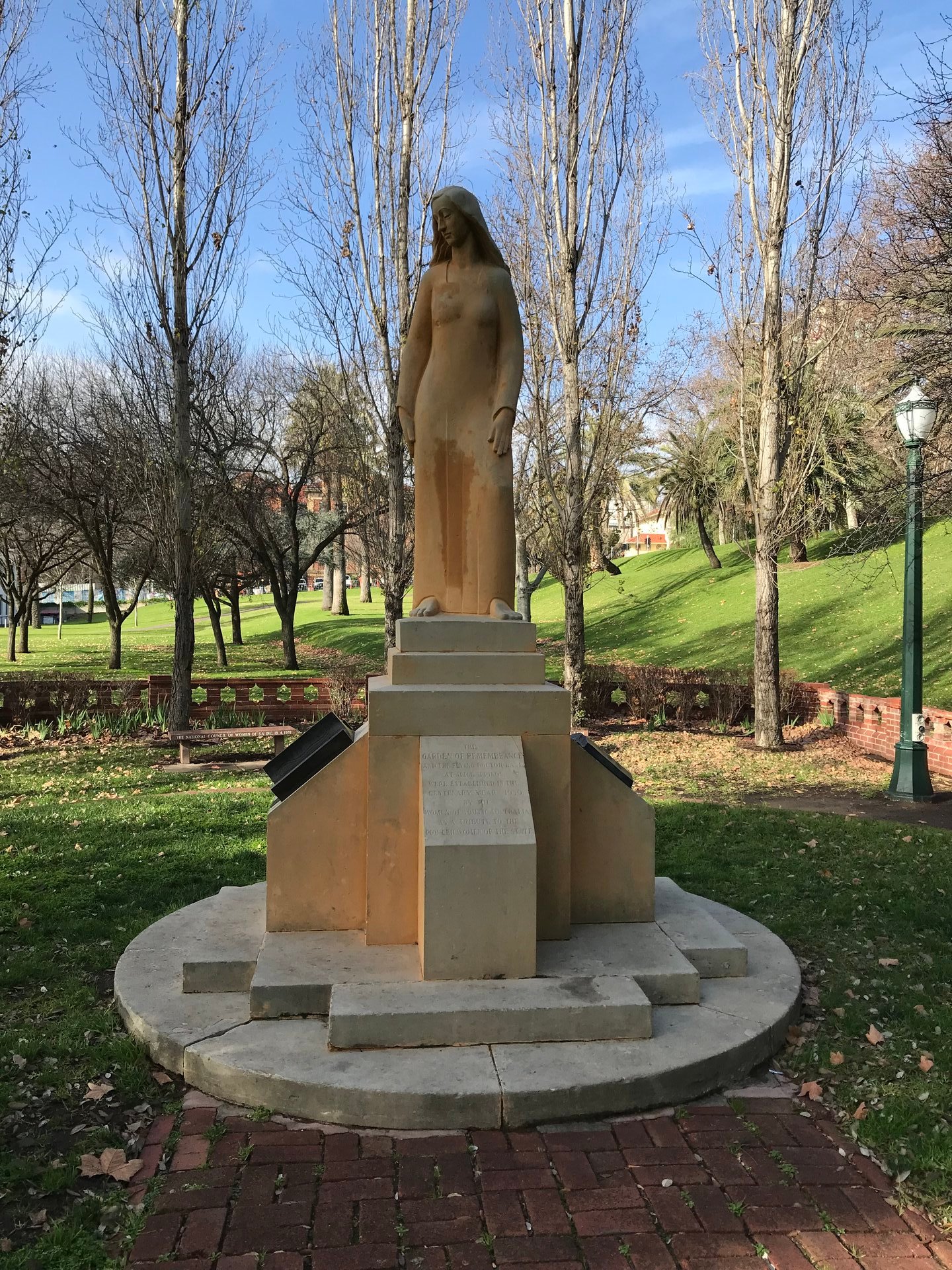
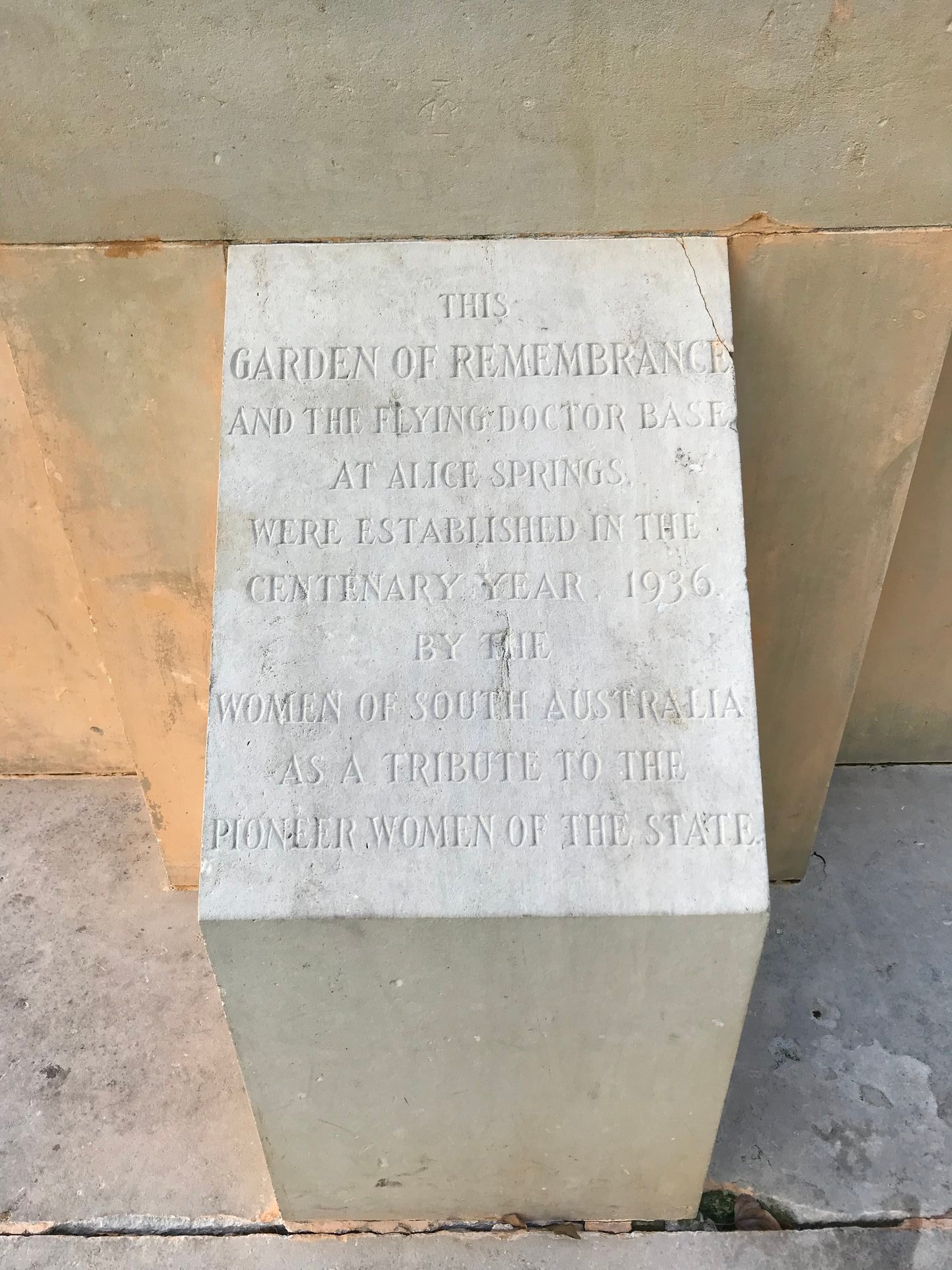
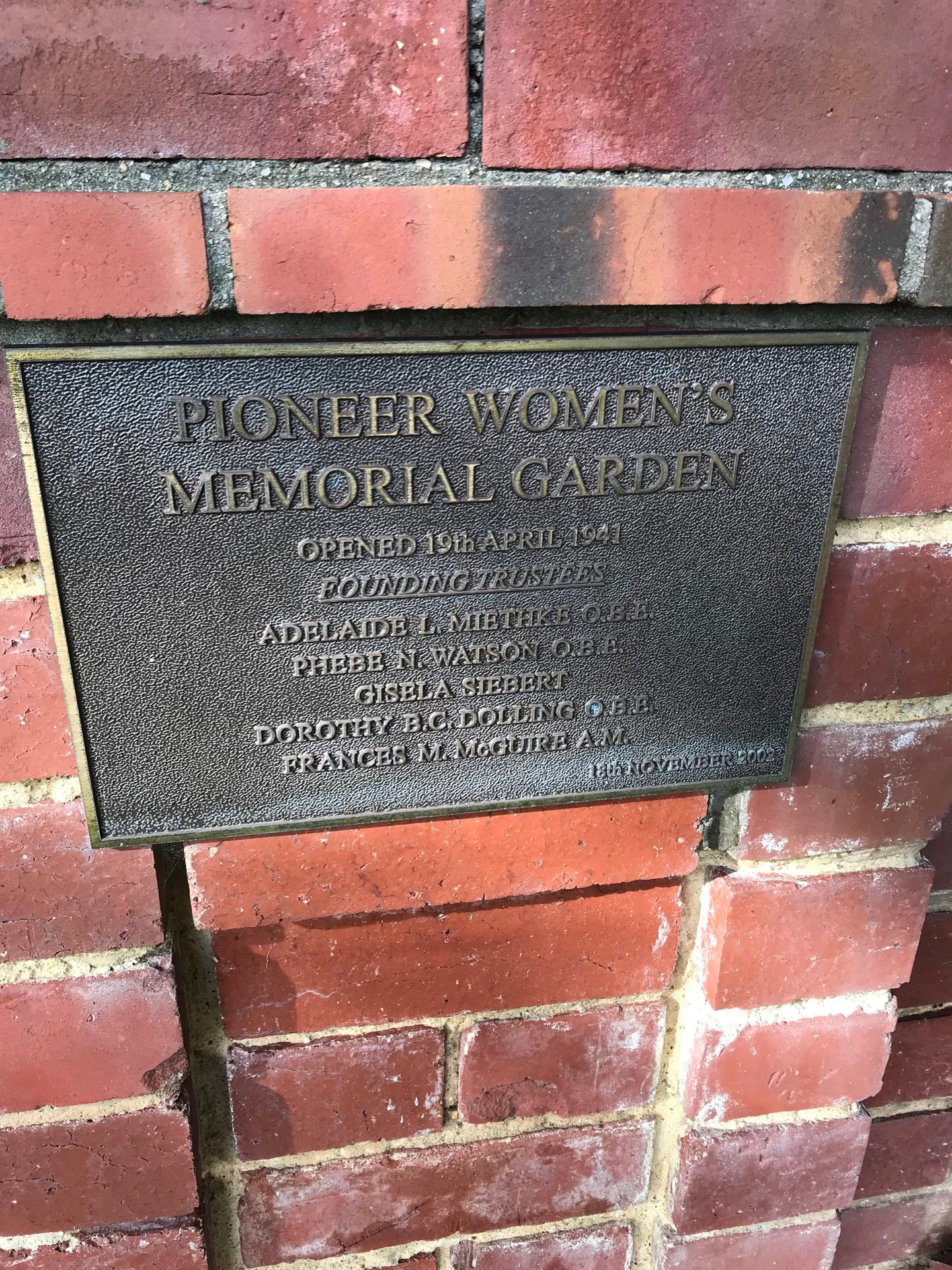
Pioneer Women's Memorial Garden
Adelaide SA 5000, AustraliaHave Story To Share?
Blog with Trip.Social

Reach new audiences and maximize your potential.